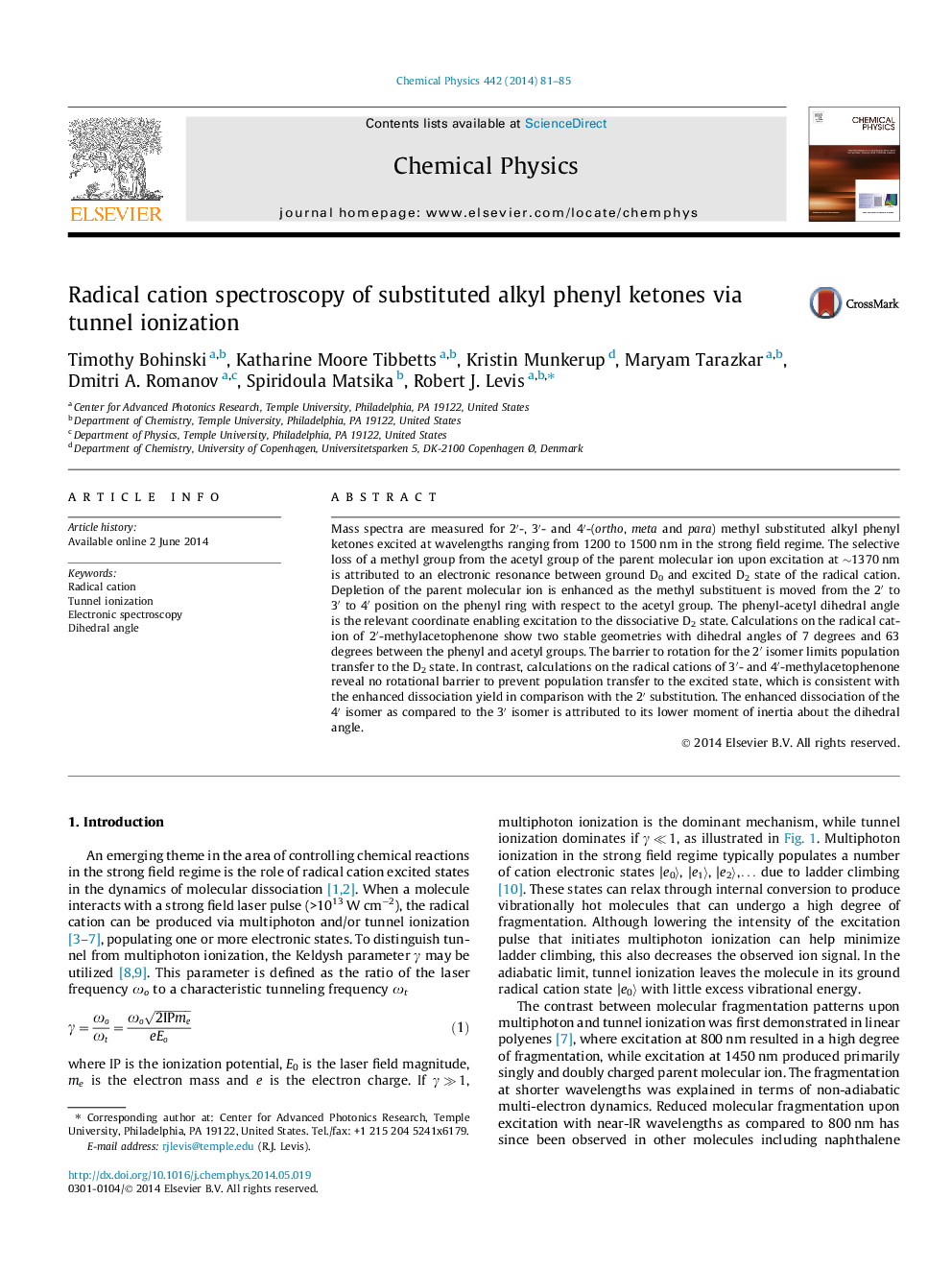| کد مقاله | کد نشریه | سال انتشار | مقاله انگلیسی | نسخه تمام متن |
|---|---|---|---|---|
| 5373491 | 1504222 | 2014 | 5 صفحه PDF | دانلود رایگان |
- Infrared strong field spectroscopy on (o, m, p)-methylacetophenone was performed.
- Electronic resonance in the radical cations at 1370Â nm produces benzoyl fragment.
- Magnitude of resonance feature increases from ortho to meta to para isomer.
- Hydrogen interactions and moment of inertia account for the trend across isomers.
Mass spectra are measured for 2â²-, 3â²- and 4â²-(ortho, meta and para) methyl substituted alkyl phenyl ketones excited at wavelengths ranging from 1200 to 1500Â nm in the strong field regime. The selective loss of a methyl group from the acetyl group of the parent molecular ion upon excitation at â¼1370Â nm is attributed to an electronic resonance between ground D0 and excited D2 state of the radical cation. Depletion of the parent molecular ion is enhanced as the methyl substituent is moved from the 2â² to 3â² to 4â² position on the phenyl ring with respect to the acetyl group. The phenyl-acetyl dihedral angle is the relevant coordinate enabling excitation to the dissociative D2 state. Calculations on the radical cation of 2â²-methylacetophenone show two stable geometries with dihedral angles of 7 degrees and 63 degrees between the phenyl and acetyl groups. The barrier to rotation for the 2â² isomer limits population transfer to the D2 state. In contrast, calculations on the radical cations of 3â²- and 4â²-methylacetophenone reveal no rotational barrier to prevent population transfer to the excited state, which is consistent with the enhanced dissociation yield in comparison with the 2â² substitution. The enhanced dissociation of the 4â² isomer as compared to the 3â² isomer is attributed to its lower moment of inertia about the dihedral angle.
161
Journal: Chemical Physics - Volume 442, 17 October 2014, Pages 81-85
